News
GolfWRX takes a behind-the-scenes look at the Callaway ball plant

In Chicopee, Massachusetts, there is an unassuming red brick building that predates the existence of every modern golf OEM. From the outside, it could be confused for any other American manufacturing facility if not for the proudly displayed Callaway sign. Inside, there are over 400 hard-working people producing the highest quality golf balls using state-of-the art manufacturing techniques and tools — this red brick building is the Callaway golf ball plant.
To understand what you see when you first enter the ball plant, it’s best to first understand why it is here in the first place. When I initially asked this question to one of my tour guides, Vincent Simonds, the Senior Director of Global Golf Ball Operations, his answer started with a story that predated cars…it was at this point I knew that these guys mean business.
The modern history, however, starts in 2003 when Callaway purchased Top-Flite brand and subsidiaries, and with it purchased the entire Top-Flite manufacturing facility. In its it heyday, Top-Flite/Spaulding was producing its full line of clubs and balls out of this building, and that included equipment made for Bobby Jones. Chicopee, Massachusetts, was essentially the center of the golf club technology universe.
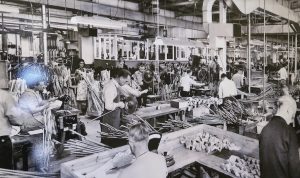
Part of the original Spaulding golf club factory
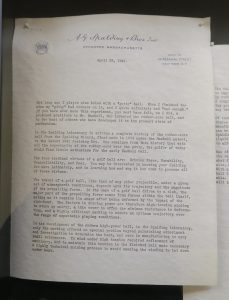
Letter from Bobby Jones discussing the advantage of the newly designed ball

Page 2 of the Letter from Bobby Jones
When its comes to balls, most modern golfers don’t equate Top-Flite with premium equipment or breakthroughs, but during this time period the ball plant in Chicopee was responsible for just as many technology and scientific breakthroughs as its modern Callaway self.
One Example is Bob Molitor. In 1972, Molitor developed the first two-piece golf ball with a Surlyn cover by combining the right amounts of various ionomers. This allowed golf balls to have much greater durability and along with it improved distance. This development is part of the reason the USGA had to establish the “One Ball Rule” because players would switch out depending on the hole since there was a huge distance advantage to this Solid Core Surlyn Cover design. Imagine that – the USGA having to change rules to accommodate a new technology, seems to me our current daily discussions about bifurcation aren’t something so new after all.
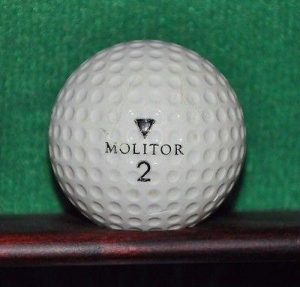
There were a lot of other great innovations over the years that lead to new technology making its way into the bags of players all over the world, one of which caused a revolution that we still benefit from today. In the 90s Top-Flite, under the Strata brand, cracked the code of merging the soft, high-spin “tour ball” performance with the lower-spinning, longer-flying, and more durable “distance ball”, this three-piece ball was like two balls in one. Strata’s design team accomplished this feat by placing a soft polyurethane cover on a Top-Flite distance ball, and then added a thin layer between the cover and the core that encased the ball’s already large and solid rubber core. In short, the modern golf ball was born.
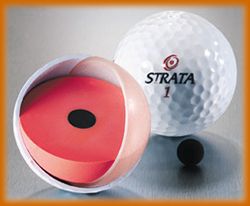
This brings us back to the modern day Callaway ball plant, a facility where the average employee tenure exceeds 20 years, and where every single premium Callaway Ball on the planet is made. The thing I quickly realized upon entering the plant for the first time is the pride every person has for their role in making world class golf balls. This sense of pride, and a friendly, yet hard-working environment is something I witnessed before at Callaway’s Carlsbad facility too — a testament to the company’s corporate leadership and the culture that they promote everyday. The “Victory Flag,” as they call it, was flying high thanks to Xander Schauffele’s win just a few days before my visit.

The start of production begins with materials formulation
I was able to observe a pre-shift meeting, and you would think that based on the discussion of machine tolerances, quality control, & equipment inspections this plant is making parts for a yet-to-be-seen shuttle being sent into space, but they’re talking golf balls. Speaking to the tolerances the plant works within, the in-house machine shop had some amazing equipment, including some things I unfortunately could not share through pictures. This equipment works with the tolerances of less than the 1/30th the thickness of a Post-It Note. For example, each single side to a cover mold for the Chrome Soft line takes more than 30 hours of machine time to complete — an amount of time which might seem excessive, but when you think of the speed and forces impacting a golf ball from first driver strike and along its parabolic trajectory, we really are talking space shuttle physics.
Some of the most impressive equipment has nothing to do with the performance of the balls but rather how they look. I’m talking here about the Truvis patterned balls. What was perceived by many golfers at first as a gimmick (and something than even some Callaway management believed would be a fad) has proven to be an absolute slam dunk. The pentagon pattern provides a tangible benefit by creating an optical illusion that makes the ball look bigger (and easier to hit) especially out of the rough, and also gives visual feedback for short game shots and putting.
Let’s just say that what started as a toe dip with one machine has turned into an area of the plant with more than a dozen machines, and Callaway is also producing Truvis balls with custom colors and logos — they’re not just printing pentagons anymore.

GolfWRX Truvis
For actual production, every ball starts as raw materials, and compounds are precisely mixed in house, allowing Callaway to control the entire production process. The amount of materials engineering and chemistry I witnessed was way beyond what I was expecting, and to be frank, I went in with already high expectations. After initial mixing each batch is tested and sent to the next step.
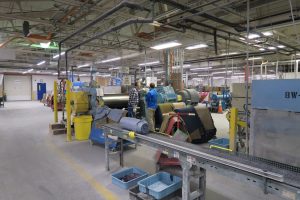
Mixing Station
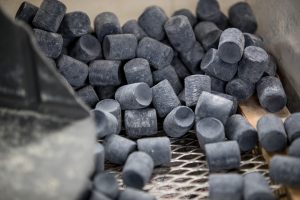
Pre cut core “slugs” ready for baking
Ever wonder why the cores of various golf balls from a single OEM are so bright and differently colored? It’s actually done to make each material identifiable in the process and give production staff another way to make sure materials get to the right manufacturing line. Of all the questions I asked, this one had the most simple answer.
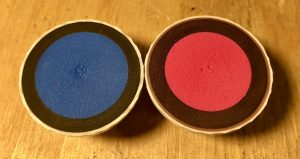
Callaway ERC ( Left ) vs. Chrome Soft ( Right )
The next step is the “cooking” process of the inner core. Each oven press is precisely controlled for pressure and temperature along multiple areas of each unit, this ensures a core that comes from the outer part of the press is formed and “cooked” to the exact same spec as one from the middle. The same process is used for both parts of the dual core.

Hydraulic press “oven” for producing cores
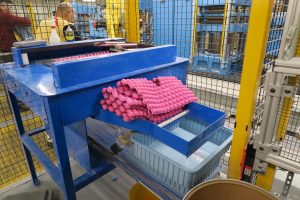
Cores post-pressing and still hot
Callaway utilized a proprietary manufacturing and molding technique to ensure exact specifications are met for centering the core and achieving correct cover thickness. Once the covers are in place, we officially have a golf ball, but we’re not done yet. There are still more quality control checks done by machine as well and humans to once again ensure each ball that leaves the plant is built to the highest quality standards and will perform just like the one before it.

Chrome Softs just after the cover process – Still very warm to the touch as the urethane cools
Even the final paint and clear coat are highly engineered to resist staining, sheering, and stay on during deformation. To quote of one my tour guides, “The force applied to the cover and paint on the ball by a wedge would be like taking a hatchet to the paint on the side of your house.” It might seem like a simple process, but to ensure full coverage of sphere requires some pretty unique tools to get the job done.
This brings us to the new Triple Track Alignment system and how it was developed to help golfers play better. The new system helps improve alignment on putts from all lengths and it also happens to be on Callaway’s longest ball to date: the ERC Soft.
The alignment aid wraps 160 degrees around the ball and offers three parallel lines with high contrast (no more need to try and draw that long Sharpie line around your ball). For those who choose to putt without the Triple Track alignment, Callaway considered you too, since the other 200 degrees around the ball unsure that you won’t see those lines from address.

Triple Track Alignment visible vs hidden
Every shot taken means something to someone, whether it be a golfer trying to break 100 for the first time, or a tour professional lining up a putt on Sunday afternoon of a major championship. The golf ball is the one piece of equipment a golfer will use on every shot, and each person at the Callaway ball plant in Chicopee, Massachusetts, is proud to put their name behind it, even if you don’t see those names on the box.
- LIKE171
- LEGIT19
- WOW10
- LOL0
- IDHT4
- FLOP0
- OB0
- SHANK8
Equipment
Did Rory McIlroy inspire Shane Lowry’s putter switch?
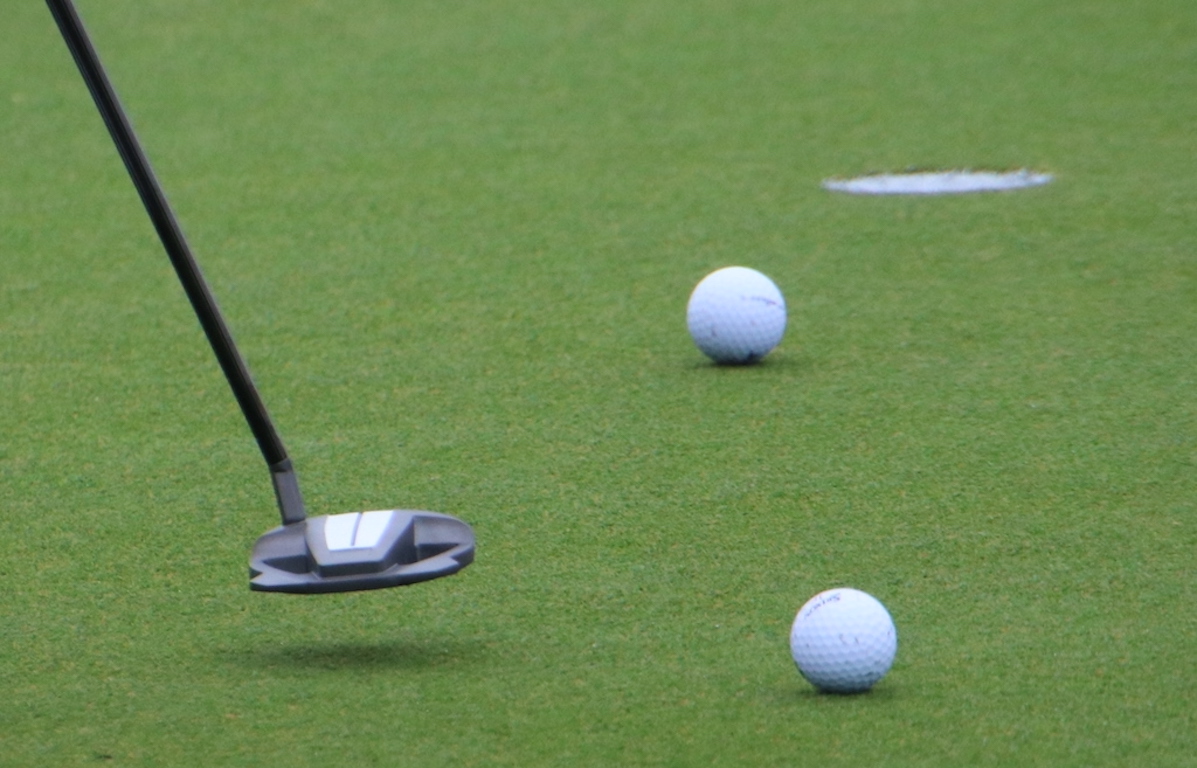
Editor’s note: This is an excerpt from a piece our Andrew Tursky originally wrote for PGATour.com’s Equipment Report. Head over there for the full article.
The timing of Lowry’s putter changeup was curious: Was he just using a Spider putter because he was paired with McIlroy, who’s been using a Spider Tour X head throughout 2024? Was Lowry just being festive because it’s the Zurich Classic, and he wanted to match his teammate? Did McIlroy let Lowry try his putter, and he liked it so much he actually switched into it?
Well, as it turns out, McIlroy’s only influence was inspiring Lowry to make more putts.
When asked if McIlroy had an influence on the putter switch, Lowry had this to say: “No, it’s actually a different putter than what he uses. Maybe there was more pressure there because I needed to hole some more putts if we wanted to win,” he said with a laugh.
To Lowry’s point, McIlroy plays the Tour X model, whereas Lowry switched into the Tour Z model, which has a sleeker shape in comparison, and the two sole weights of the club are more towards the face.
Lowry’s Spider Tour Z has a white True Path Alignment channel on the crown of his putter, which is reminiscent of Lowry’s former 2-ball designs, thus helping to provide a comfort factor despite the departure from his norm. Instead of a double-bend hosel, which Lowry used in his 2-ball putters, his new Spider Tour Z is designed with a short slant neck.
“I’ve been struggling on the greens, and I just needed something with a fresh look,” Lowry told GolfWRX.com on Wednesday at the 2024 Wells Fargo Championship. “It has a different neck on it, as well, so it moves a bit differently, but it’s similar. It has a white line on the back of it [like my 2-ball], and it’s a mallet style. So it’s not too drastic of a change.
“I just picked it up on the putting green and I liked the look of it, so I was like, ‘Let’s give it a go.’”
Read the rest of the piece over at PGATour.com.
- LIKE1
- LEGIT0
- WOW0
- LOL0
- IDHT0
- FLOP0
- OB0
- SHANK0
Equipment
Spotted: Tommy Fleetwood’s TaylorMade Spider Tour X Prototype putter
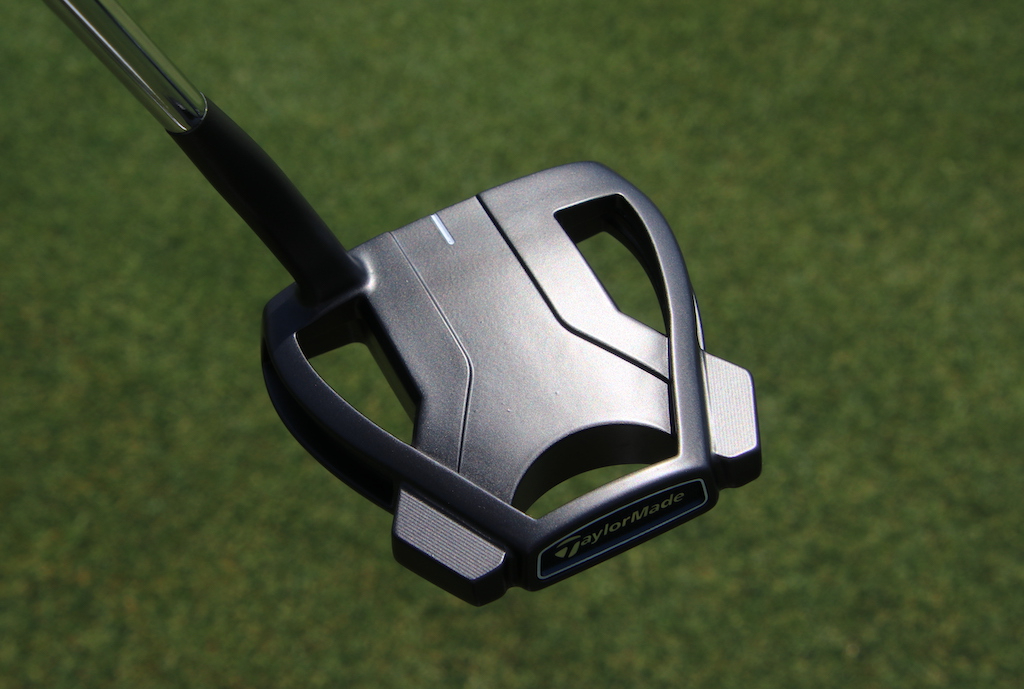
Tommy Fleetwood has been attached to his Odyssey White Hot Pro #3 putter for years now. However, this week at the Wells Fargo Championship, we did spot him testing a new putter that is very different, yet somewhat similar, to his current gamer.
This new putter is a TaylorMade Spider Tour X head but with a brand new neck we haven’t seen on a Spider before. A flow neck is attached to the Spider head and gives the putter about a 1/2 shaft offset. This style neck will usually increase the toe hang of the putter and we can guess it gets the putter close to his White Hot Pro #3.
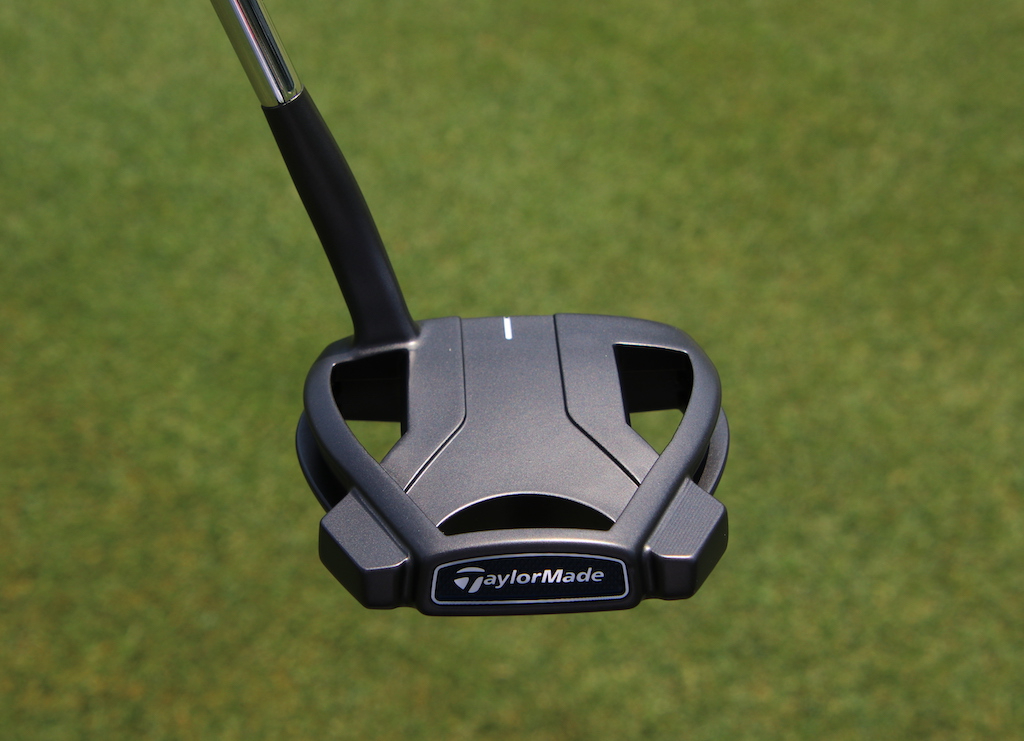
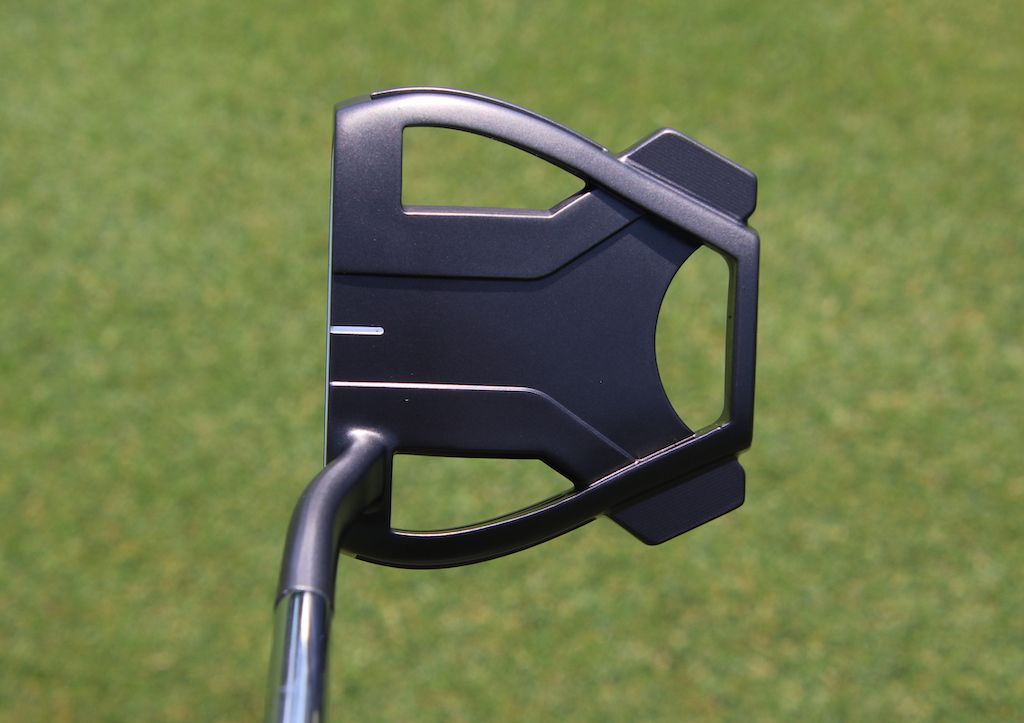
Another interesting design is that lack of TaylorMade’s True Path alignment on the top of the putter. Instead of the large white center stripe, Tommy’s Spider just has a very short white site line milled into it. As with his Odyssey, Tommy seems to be a fan of soft inserts and this Spider prototype looks to have the TPU Pure Roll insert with 45° grooves for immediate topspin and less hopping and skidding.
The sole is interesting as well in that the rear weights don’t look to be interchangeable and are recessed deep into the ports. This setup could be used to push the CG forward in the putter for a more blade-like feel during the stroke, like TaylorMade did with the Spider X Proto Scottie Scheffler tested out.
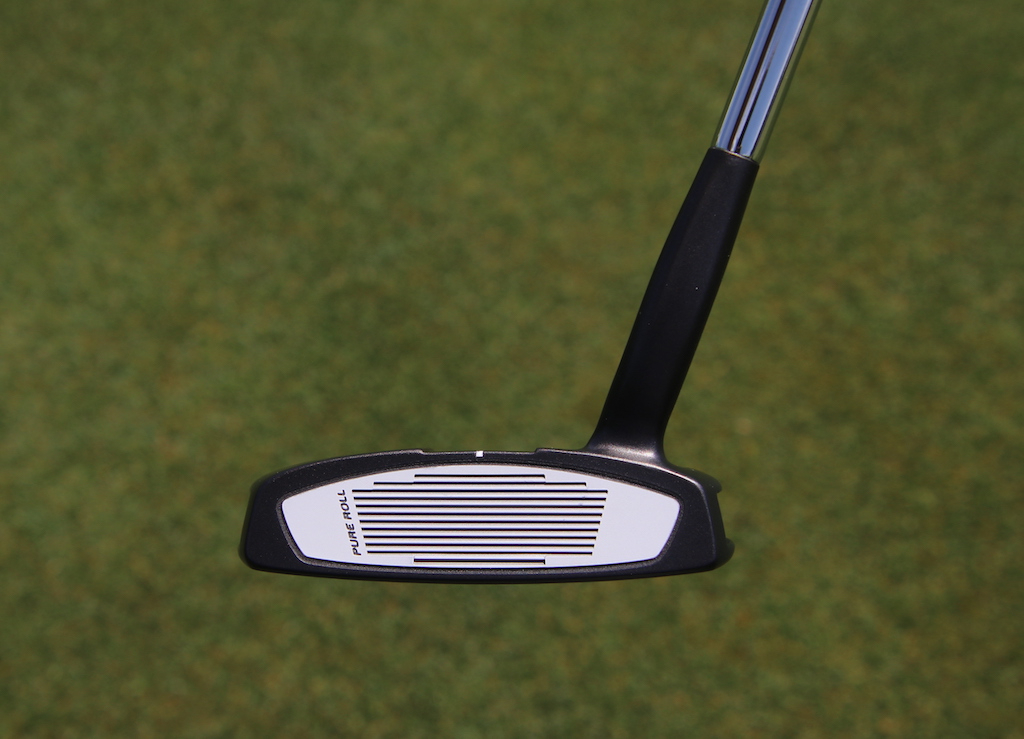
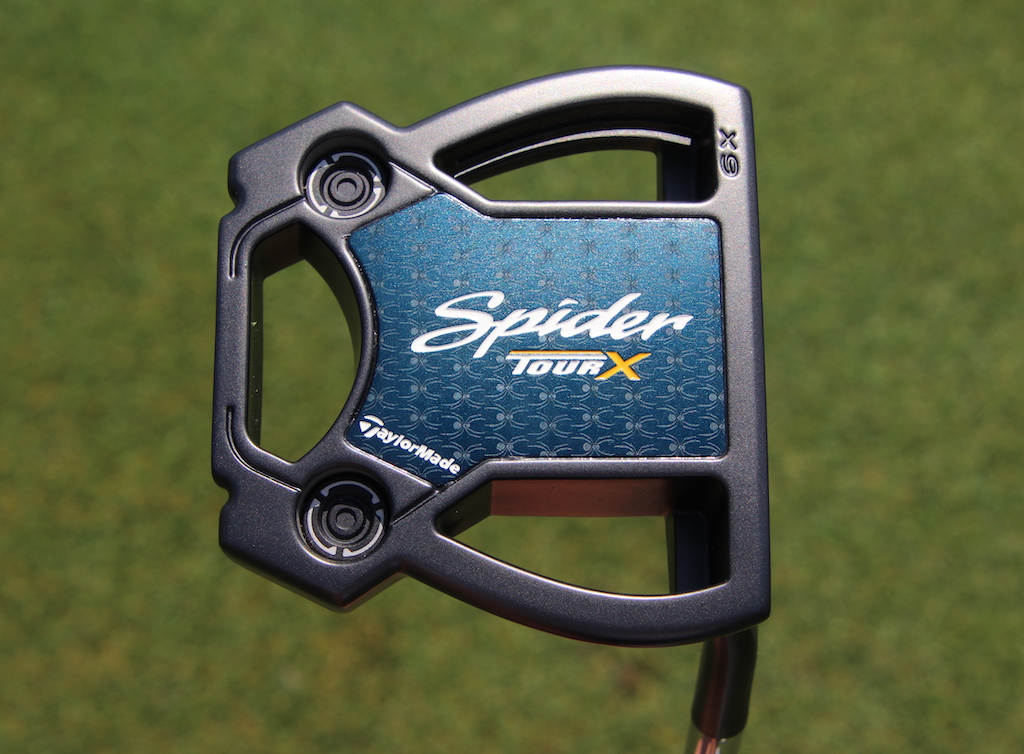
Tommy’s putter is finished off with an older Super Stroke Mid Slim 2.0 grip in blue and white. The Mid Slim was designed to fit in between the Ultra Slim 1.0 and the Slim 3.0 that was a popular grip on tour.
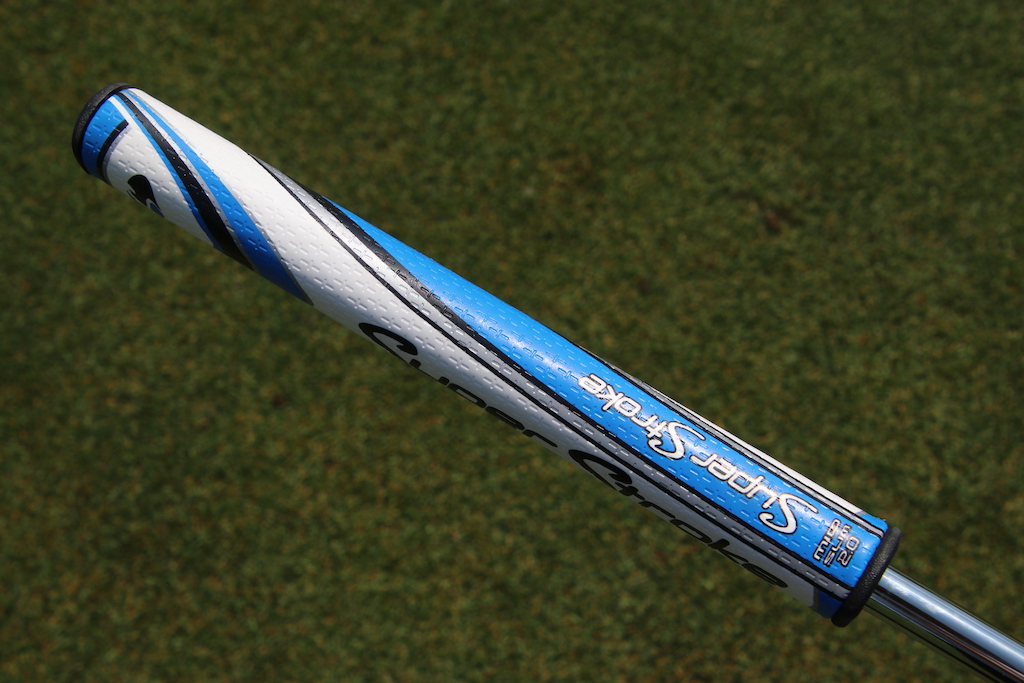
- Check out the rest of our photos from the 2024 Wells Fargo Championship
- LIKE23
- LEGIT2
- WOW2
- LOL1
- IDHT1
- FLOP0
- OB0
- SHANK0
Equipment
Rickie Fowler’s new putter: Standard-length Odyssey Jailbird 380 in custom orange
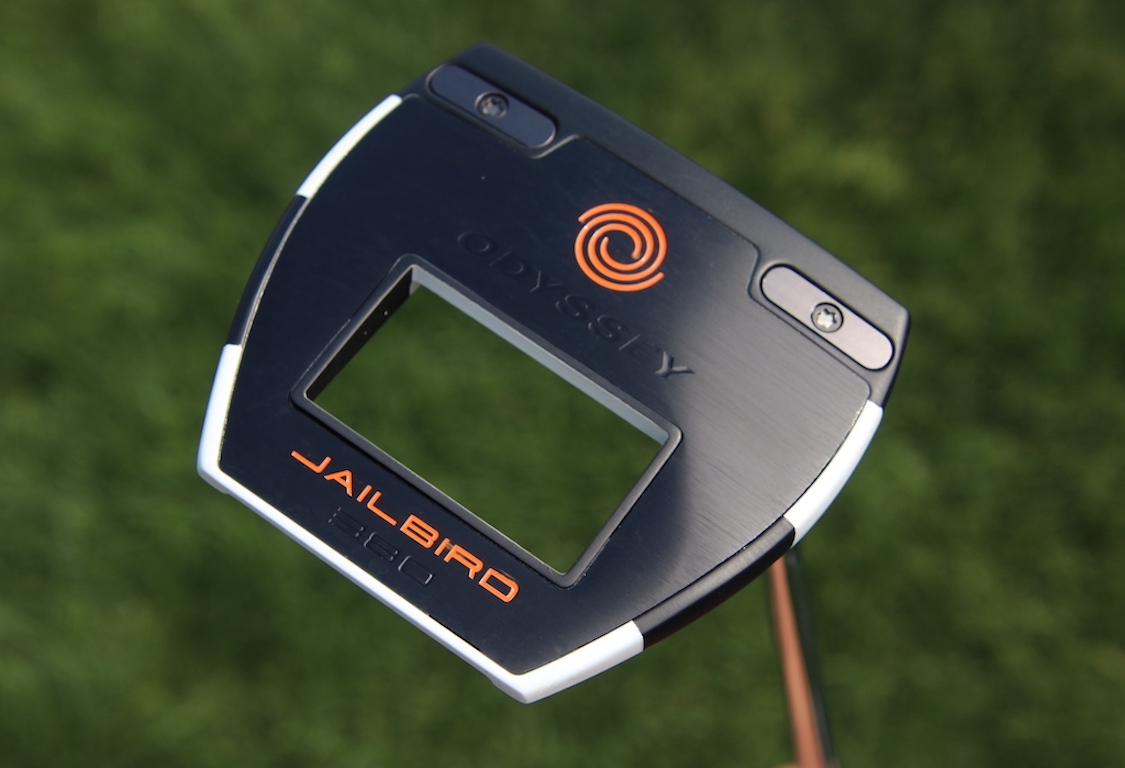
Editor’s note: This is an excerpt from a piece our Andrew Tursky originally wrote for PGATour.com’s Equipment Report. Head over there for the full article.
…The Jailbird craze hasn’t really slowed down in 2024, either. According to Odyssey rep Joe Toulon, there are about 18-20 Jailbird putter users on the PGA TOUR.
Most recently, Akshay Bhatia won the 2024 Valero Texas Open using a broomstick-style Odyssey Jailbird 380 putter and Webb Simpson is switching into a replica of that putter at the 2024 Wells Fargo Championship.
Now, Fowler, who essentially started the whole Jailbird craze, is making a significant change to his putter setup.
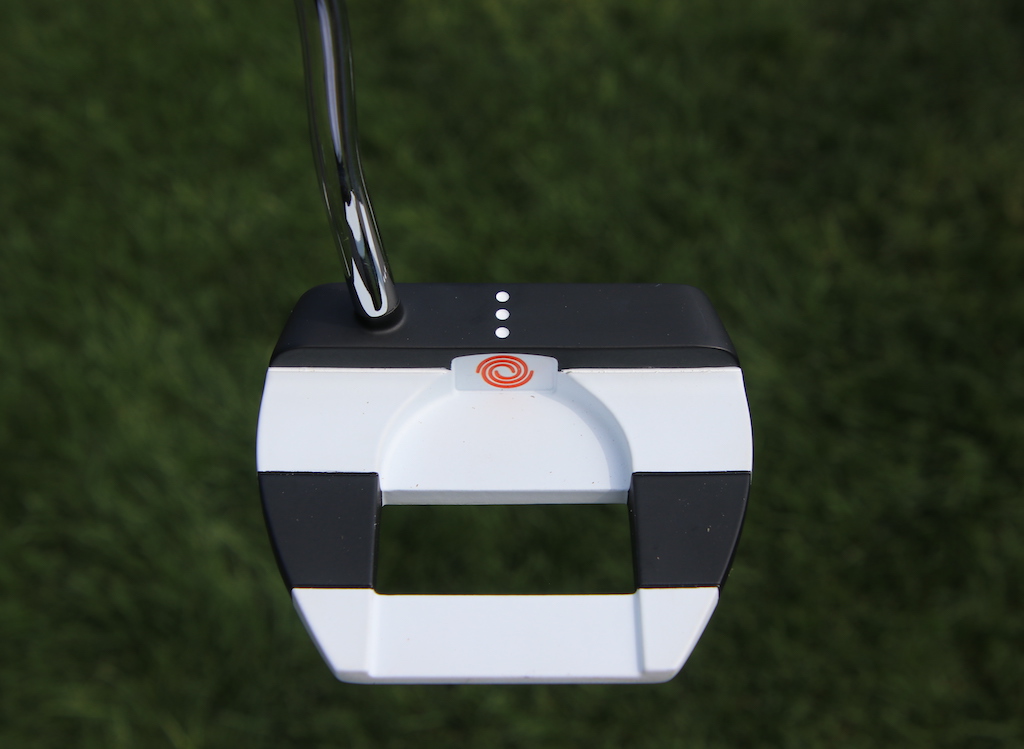
Fowler, who has had a couple weeks off since the 2024 RBC Heritage, started experimenting with a new, custom-orange Jailbird 380 head that’s equipped with a standard 35-inch putter build, rather than his previous 38-inch counter-balanced setup.
According to Fowler, while he still likes the look and forgiveness of his Jailbird putter head, he’s looking to re-incorporate more feel into his hands during the putting stroke.
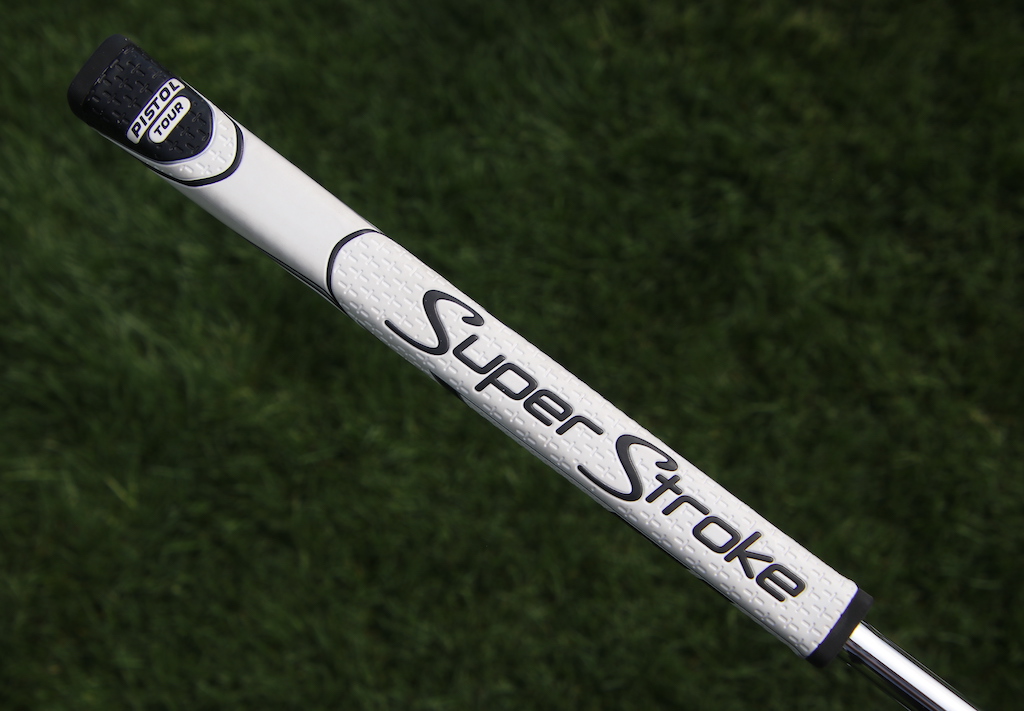
He told GolfWRX.com on Tuesday at the Wells Fargo Championship that the 38-inch counterbalanced setup “served its purpose” by helping him to neutralize his hands during the stroke, but now it’s time to try the standard-length putter with a standard-size SuperStroke Pistol Tour grip to help with his feel and speed control.
Although Fowler was also spotted testing standard-length mallets from L.A.B. Golf and Axis1 on Tuesday, he confirmed that the custom Odyssey Jailbird 380 is the putter he’ll use this week at the 2024 Wells Fargo Championship.
Head over to PGATour.com for the full article.
- LIKE41
- LEGIT11
- WOW3
- LOL4
- IDHT1
- FLOP2
- OB0
- SHANK7
-

 19th Hole3 weeks ago
19th Hole3 weeks agoJustin Thomas on the equipment choice of Scottie Scheffler that he thinks is ‘weird’
-

 19th Hole3 weeks ago
19th Hole3 weeks ago‘Absolutely crazy’ – Major champ lays into Patrick Cantlay over his decision on final hole of RBC Heritage
-

 19th Hole2 weeks ago
19th Hole2 weeks agoLET pro gives detailed financial breakdown of first week on tour…and the net result may shock you
-

 19th Hole3 days ago
19th Hole3 days agoReport: LIV star turns down PGA Championship invite due to ‘personal commitments’
-

 19th Hole1 week ago
19th Hole1 week agoGary Player claims this is what ‘completely ruined’ Tiger Woods’ career
-

 Whats in the Bag2 weeks ago
Whats in the Bag2 weeks agoTeam McIlowry (Rory McIlroy, Shane Lowry) winning WITBs: 2024 Zurich Classic
-

 Equipment1 week ago
Equipment1 week agoGolf fans left surprised by LIV’s choice of course for its 2024 individual championship event
-

 Equipment2 days ago
Equipment2 days agoDetails on Justin Thomas’ driver switch at the Wells Fargo Championship





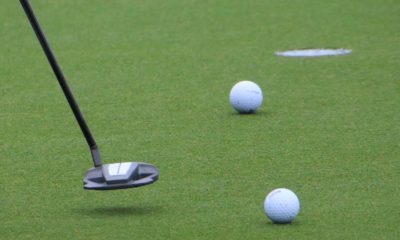

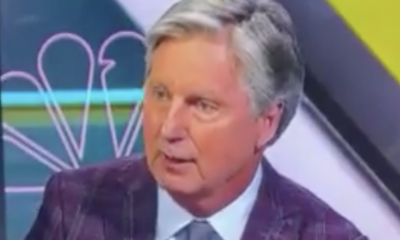

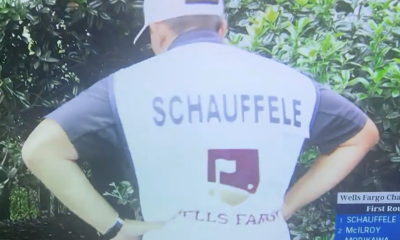

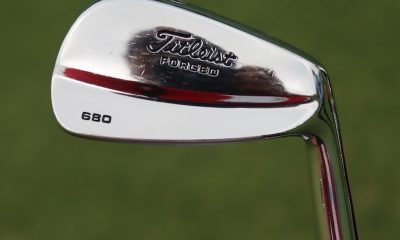

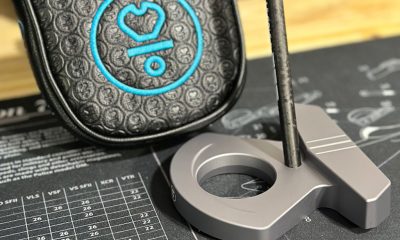















DanT
Mar 14, 2019 at 7:52 pm
PROBLEM – NOT ALL CALLAWAY BALLS ARE PRODUCED IN THE US!!
The SuperSoft is made in Taiwan!!
In my opinion – this story makes you think – all Callaway balls are made in the US –WRONG!!
Perplexed
Jan 20, 2019 at 1:08 pm
Did the USGA come up with the one ball rule? I don’t recall having ever seen it in the USGA rules. It seemed like a PGA Tour rule to me.
Mark
Jan 19, 2019 at 11:26 am
I’m curious if you asked if they run special batches for their tour players and what % play one of the standard production balls?
Willie Carmichael
Jan 19, 2019 at 11:01 am
It’s spelled Spalding.
Bill C
Jan 19, 2019 at 8:58 am
Golf balls are very fascinating. They seem so simple, yet the amount of engineering which goes into their design and manufacture always amazes me.